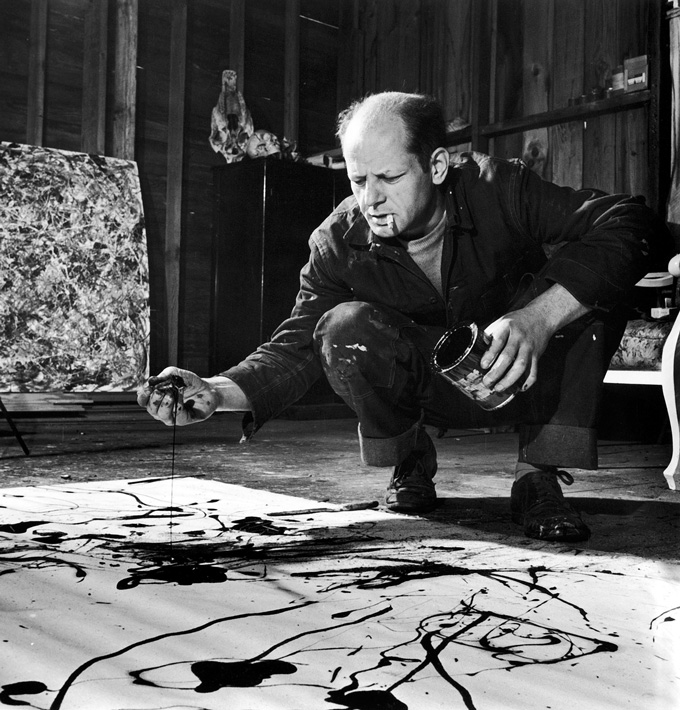The history of painting reaches back in time to artifacts from pre-historic humans, and spans all cultures. It represents a continuous, though periodically disrupted, tradition from antiquity.
Across cultures, and spanning continents and millennia, the history of painting is an ongoing river of creativity, that continues into the 21st century. Until the early 20th century it relied primarily on representational, religious, and classical motifs, after which time more purely abstract and conceptual approaches gained favour.
It is a never-ending chain that began with the very first pictures ever made. Each style grows out of the styles that came before it, and every great artist adds to the accomplishments of earlier painters, influencing later painters.
Here we look at the most famous artists of all time, shining a light on their most notable pieces of work, and what made them revolutionary.
Andy Warhol
American Painter, Draftsman, Filmmaker, and Printmaker

Technically, Warhol didn’t invent Pop Art, but he did manage to take the style out of the art world, bringing it into the world of fashion and celebrity. Starting out as a commercial artist, he brought the ethos of advertising into fine art, even going so far as to say, ‘Making money is art.’ Such sentiments blew away the existential pretensions of Abstract Expressionism. Although he’s famous for subjects such as Campbell’s Soup, Marilyn Monroe and Elvis Presley, his greatest creation was himself.
Born: August 6, 1928 – Pittsburgh, Pennsylvania
Died: February 22, 1987 – New York, New York
Pablo Picasso
Spanish Draftsman, Painter, Printmaker, and Sculptor

Born in Málaga, Spain, Pablo Picasso is undoubtedly one of the most famous artists ever, with his name being virtually synonymous with modern art. He changed the course of art history with revolutionary innovations that include collage and, of course, Cubism, which broke the stranglehold of representational subject matter on art, and set the tempo for other 20th-century artists. He utterly transformed multiple mediums, making so many works that it’s hard to grasp his achievement.
Born: October 25, 1881 – Malaga, Spain
Died: April 8, 1973 – Mougins, France
Jackson Pollock
American Painter

Hampered by self-doubt and clumsiness as a conventional painter, Pollock transcended his limitations in a brief but incandescent period between 1947 and 1950 when he produced the drip abstractions that cemented his renown. Eschewing the easel to lay his canvases on the floor, he used house paint straight from the can, flinging and dribbling thin skins of pigment that left behind a concrete record of his movements, a technique that would become known as action painting.
Born: January 28, 1912 – Cody, Wyoming
Died: August 11, 1956 – East Hampton, New York
Vincent van Gogh
Dutch Draftsman and Painter

Van Gogh is legendary for being mentally unstable, he did after all, cut off part of his ear after an argument with fellow painter Paul Gauguin, but his paintings are among the most famous and beloved of all time. The iconic tortured artist, strove to convey his emotional and spiritual state in each of his artworks, and although he sold only one painting during his lifetime, he is now one of the most popular artists of all time. Van Gogh’s technique of painting with flurries of thick brushstrokes made up of bright colours squeezed straight from the tube would inspire subsequent generations of artists.
Born: March 30, 1853 – Groot-Zundert, The Netherlands
Died: July 29, 1890 – Auvers-sur-Oise, France
Leonardo da Vinci
Italian Polymath

Painter, sculptor, architect, designer, theorist, engineer and scientist, Leonardo da Vinci created some of the most famous images in European art. Though many of his works were never finished, and even fewer have survived, he influenced generations of artists and he continues to be revered as a universal genius. The original Renaissance Man, Leonardo is renowned not only for masterpieces such as the Mona Lisa, The Last Supper, and The Lady with an Ermine, but also for his drawings of technologies that were five hundred years in the future.
Born: 15 April 1452, Anchiano
Died: 2 May 1519, Clos Lucé, Amboise, France
Claude Monet
French Painter

Perhaps the best know artist among the Impressionists, Monet captured the changeable effects of light on the landscape through prismatic shards of colour delivered as rapidly painted strokes. Moreover, his multiple studies of haystacks and other subjects anticipated the use of serial imagery in Pop Art and Minimalism.
Born: November 14, 1840 – Paris, France
Died: December 5, 1926 – Giverny, France
Salvador Dalí
Spanish Painter, Sculptor, Filmmaker, Printmaker, and Performance Artist

Dalí was effectively Warhol before there was a Warhol. Like Andy, Dalí courted celebrity almost as an adjunct to his work. With their melting watches and eerie blasted landscapes, Dalí’s paintings were the epitome of Surrealism, and he cultivated an equally outlandish appearance, wearing a long-waxed moustache that resembled cat whiskers.
Born: May 11, 1904 – Figueras, Catalonia, Spain
Died: January 23, 1989 – Figueras, Catalonia, Spain
Henri Matisse
French Collagist, Draftsman, and Painter

No artist is as closely tied to the sensual pleasures of colour as Henri Matisse. His work was all about sinuous curves rooted in the traditions of figurative art, and was always focused on the beguiling pleasures of pigment and hue. ‘I am not a revolutionary by principle,’ he once said. ‘What I dream of is an art of balance, of purity and serenity, devoid of troubling or depressing subject matter, a soothing, calming influence on the mind, something like a good armchair.’
Born: December 31, 1869 – Le Cateau-Cambresis, Picardy, France
Died: November 3, 1954 – Nice, France
By Eliza Scarborough















